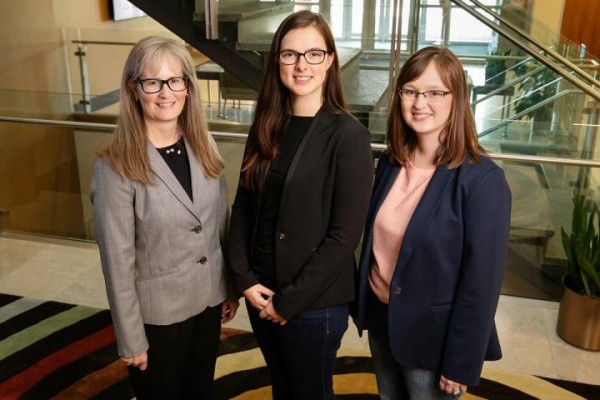
CHAMPAIGN, Ill. -- A growing body of research suggests that food insecurity is prevalent on college campuses. But according to a new paper from a team of University of Illinois experts who study food choice issues, just how many college students struggle with having enough to eat on a consistent basis is a difficult number to pin down.
The paper, co-written by Cassandra J. Nikolaus, Brenna Ellison and Sharon M. Nickols-Richardson, points to discrepancies in the way food insecurity is estimated among postsecondary students, with those discrepancies resulting in a range of potential students experiencing hunger.
"Our biggest concern is that people will read this study and think that food insecurity is not a concern, because our results show that the estimate of food-insecure students can be significantly lower depending on the survey protocol you use," said Ellison, a professor of agricultural and consumer economics. "We know there are students on college campuses who struggle with food insecurity. However, how you decide to measure food insecurity can have a large impact on the number of students you identify in need."
"Food insecurity is often a hidden problem, and so we have to rely on existing surveys to identify it in college students. It's hard to know which ones are accurate to then be able to provide food and services to students in need," said Nickols-Richardson, a professor of food science and human nutrition and director of Illinois Extension and Outreach.
Recent estimates point to anywhere from one-third to half of all postsecondary students experiencing food insecurity. Compared with the 2016 estimate of 12.3% of U.S. households experiencing food insecurity, it would seem that college students are prioritizing paying for tuition and books over paying for food.
But take those eye-popping numbers with a grain of salt, the researchers say.
In the study, a randomized sample of more than 400 undergraduate students participated in an online survey that evaluated sociodemographic characteristics and food insecurity with a two-item food sufficiency screener and the 10-item Department of Agriculture Adult Food Security Survey Module.
An analysis of the data revealed inconsistencies in the college students' response patterns when compared with the general population, according to the paper.
"We examined four different versions of how you assess food insecurity among college students, and its prevalence changed with each version," said Nikolaus, a graduate student in human nutrition and the lead author of the study. "It's possible that this measure doesn't work as well with this particular population, meaning the survey isn't capturing what people think it's capturing. Most concerning is that it may be undermining what colleges are trying to do in terms of alleviating food insecurity."
Given the limited resources available for universities to identify and serve students living with food insecurity, it's vital that the way food insecurity is assessed accurately identifies students most critically in need, the researchers say.
"The reason that's important is that we not only want to be accurate, but because these surveys are being used by all sorts of colleges and universities now to identify need on their campuses," Nikolaus said.
Because many colleges are showing interest in assessing food insecurity on their campuses, the biggest recommendation the researchers had for university administrators is "consider the different approaches for measuring food insecurity," Nikolaus said.
"Just being mindful of which one of these protocols that you use, and how you distribute it, because these are very sensitive questions that are less likely to be affirmed in-person," she said. "A lot of campuses have food pantries, but many students that I've interviewed for our next study said they don't want to use them. There's a stigma about it - that's for real poor people, not me. Even though they're specifically meant for students, they hesitate to use them."
"Our lowest estimate of food insecurity among college students is 19 percent - around 1 in 5 students. That's the lower bound of our estimate. That's still not great," Ellison said. "Even if there is a minority of students who are food insecure, it's something we should be concerned about, especially with the changing demographics of college students."
Food pantries are often considered the first option for combatting food insecurity, "but I would argue that other approaches, such as re-examining financial aid packages, providing information about SNAP to students, and others recommended in recent reports should be considered," Nikolaus said. "However, to determine the impact that any of these programs have on reducing food insecurity among college students, it will be critical to have an accurate measure."



